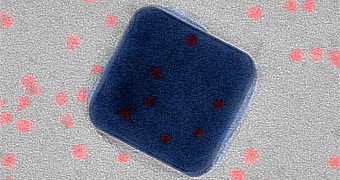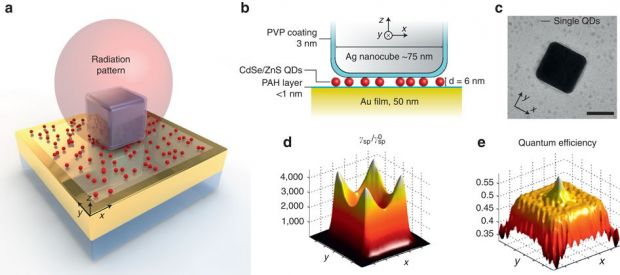Researchers at Duke University managed to create a light-emitting device based on quantum dots sandwiched between a silver nanocube 75 nm wide and a golden foil.
Apparently, the first signs of practical optical computing have arrived. If your smartphone or computer had photons instead of electrons in your device's circuits, they would work much faster than usual. For this, the transistors in your computer must flip billions of times faster than they do right now using electrons.
In the past, experiments were made using lasers. However, these eat too much energy, are too powerful and unwieldy to use reliably in chips. Yet, a much more reliable light source has probably been found under the shape of quantum dots emitting light at more than 90 gigahertz.
The experiment consists in a silver nanocube placed at exactly 20 atoms above a thin sheet of gold with a couple of semiconducting materials, each six nanometers wide, called quantum dots between the cube and gold sheet. Later on, a pulsating laser light is placed on the cube exciting photons and electrons together to create a plasmon. Afterwards, accurately placing the silver nanocube on the quantum dots above the gold sheet will create a field between the two exciting quantum dots at incredibly high frequencies, in this case 90 gigahertz. The quantum dots will emit light this way, pulsing 90 billion times per second.
At such frequencies, it's believed that new circuits and new transistors will need to be built to handle the increased frequency, probably leading technology to abandon copper entirely and move to optic fibre, as other researching institutes are already experimenting.

 14 DAY TRIAL //
14 DAY TRIAL // 

